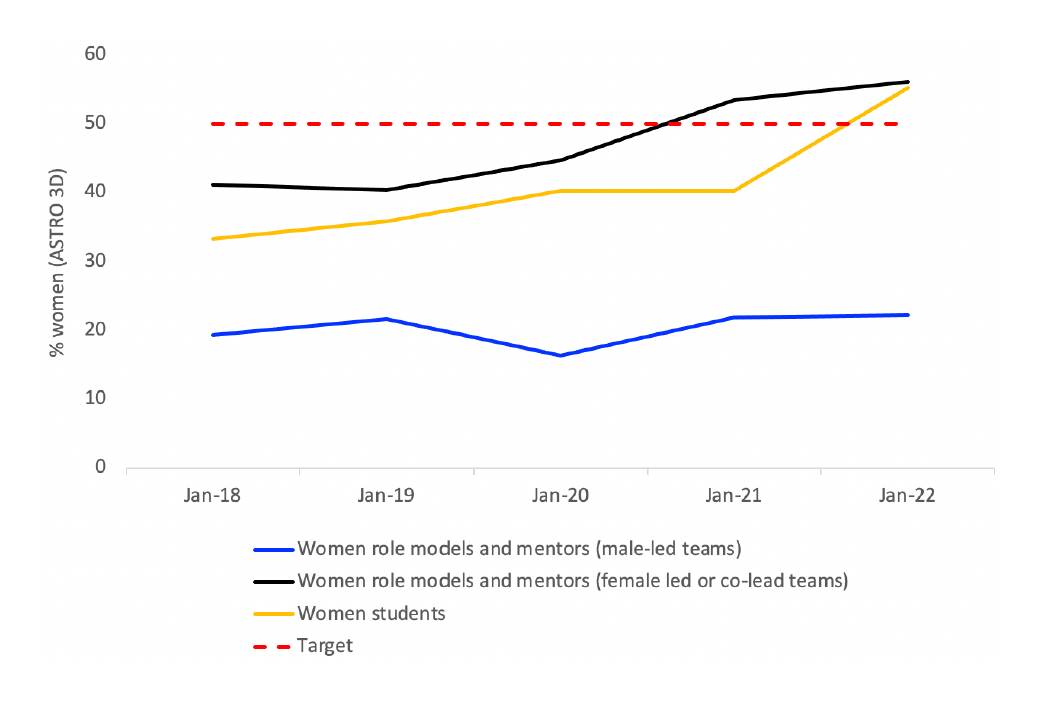OUR GOAL
In the original ASTRO 3D Proposal to the ARC, we included an ambitious goal:
“Over the course of this Centre, we seek to achieve a fraction of 50% females at all levels including the executive, the Advisory committee, and at all Centre sponsored events (including speakers), as well as equity in salaries and opportunities.”
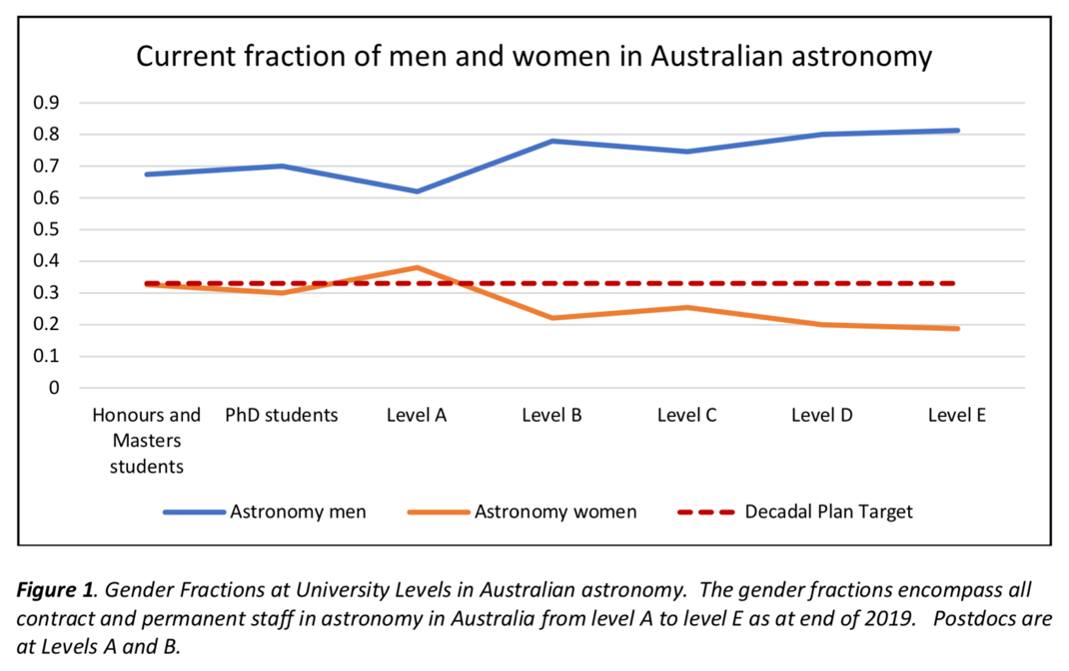
RECRUITMENT
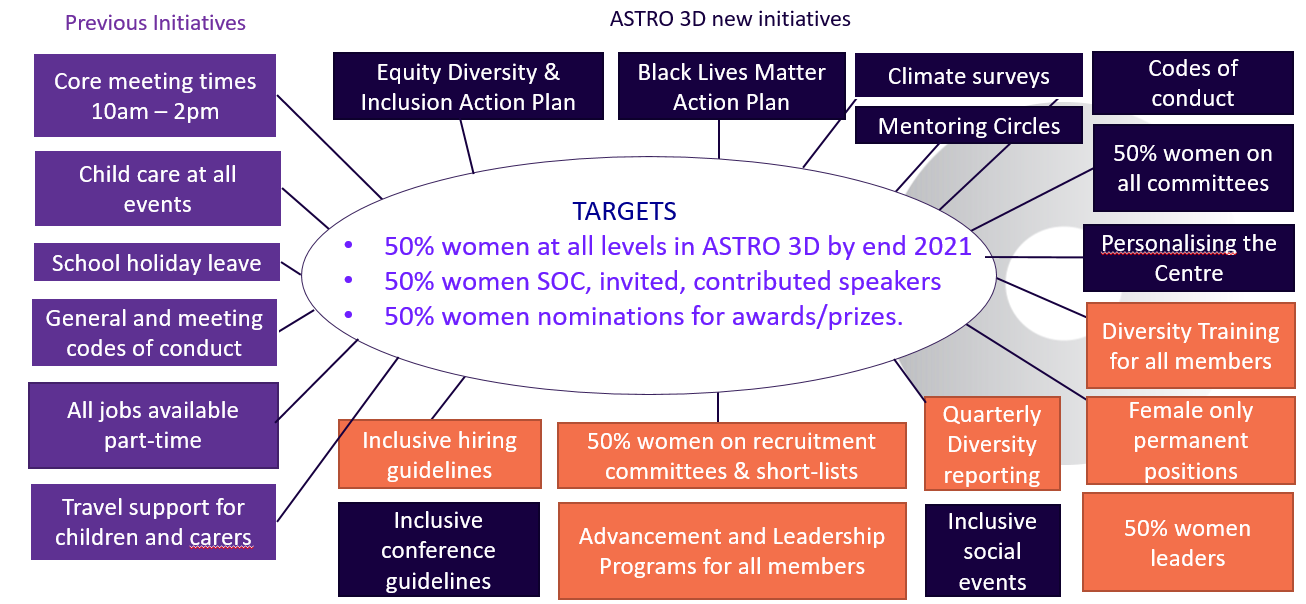
ASTRO 3D initiatives
(source: Kewley, 50:50 Gender Celebration presentation)
Broad Range of Diversity Initiatives:
CAASTRO introduced some core initiatives, aimed at making the Centre more family-friendly.
ASTRO 3D, with its bold targets, through the EDI Committee, added a broad range of diversity initiatives. Those in orange were directly aimed at achieving the 50% women at all levels of ASTRO 3D. Those in black are aimed at increasing all forms of diversity, making the Centre more equitable and inclusive.
Implicit Bias in Recruitment
So, why is it so difficult to get closer to 50:50 in science? Implicit bias is a big factor.
In a randomised double-blind study, staff from science faculties from research-intensive universities were asked to rate the application materials (CV and cover letter) of a PhD student for a laboratory manager position.
Staff rated the male applicant as significantly more competent and hireable than the (identical) female applicant and, interestingly, both male and female staff were equally likely to exhibit bias against the female applicant.
ASTRO 3D has therefore run Implicit Bias training for all members and continues to encourage hiring committees to update their training.
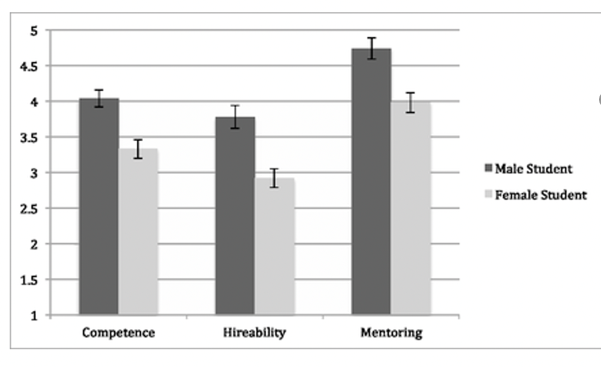
Source: Moss-Racusin, PNAS, 109, 1674c
Balanced Hiring
Overcoming implicit bias during recruitment, without implementing women-only hires/positive discrimination, will help increase the number of women in STEM. There is extensive literature on what works to attract and recruit more women at all career stages and it requires multiple inventions at all stages of recruitment. These guidelines can be applied at all levels, including fixed-term positions, such as postdoc hires.
- Advertisement – must have gender-neutral language as a minimum and also advertise the organisation as somewhere that is supportive of women. This includes advertising diverse leadership in the organisation.
- Referrals – to gain a more diverse pool of applicants, we need to widen our search for suitable candidates, using networks. Very often women are unlikely to put themselves forward without support or suggestion.
- Composition of the selection committee and diversity of chair – the selection committee should be at least 50% women, and 50% of the committee chairs overall need to be women.
- Shortlisting applicants – shortlists need to be 50:50. Blind assessment of applications (removing name and gender-identifying components) can help. Implicit bias training before shortlisting to avoid biases and stereotypes.
- Interview – implicit bias training and merit-based questions on how well candidates meet the selection criteria.
- Discussion of candidate post-interview – implicit bias training to avoid biases and stereotypes
Balanced Recruitment Works!
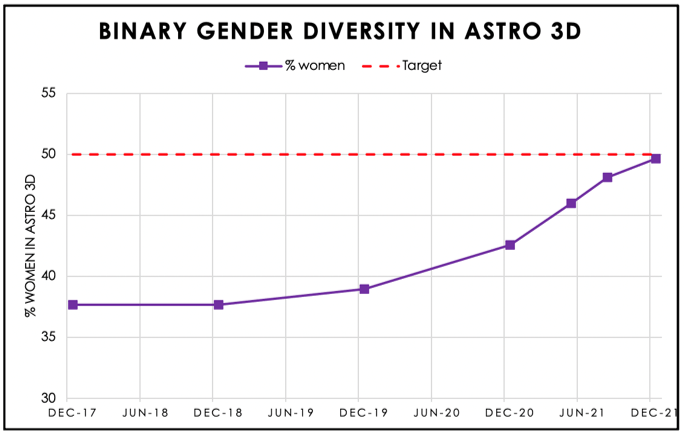
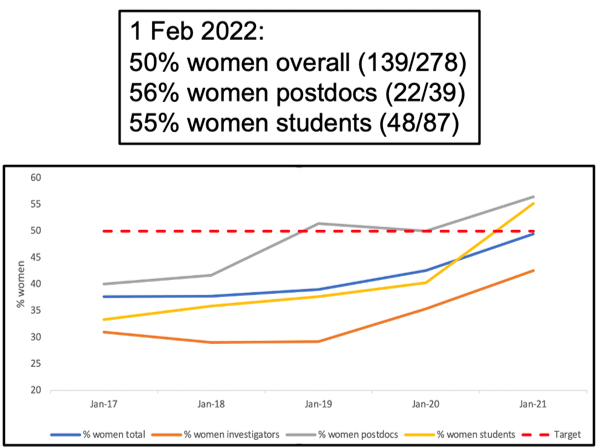
RETENTION
Women depart the physical sciences in larger numbers than men. They often depart to take up careers in other organisations.
The main reasons given are:
- Dislike of the culture (too cold/chilly)
- Lack of a good relationship with a supervisor
- Doubts that they will obtain a senior position
- Moving interstate/overseas for a spouse’s career
- Lack of role models with a visible and good balance between work and family life
We need to ensure that we retain the women we recruit!
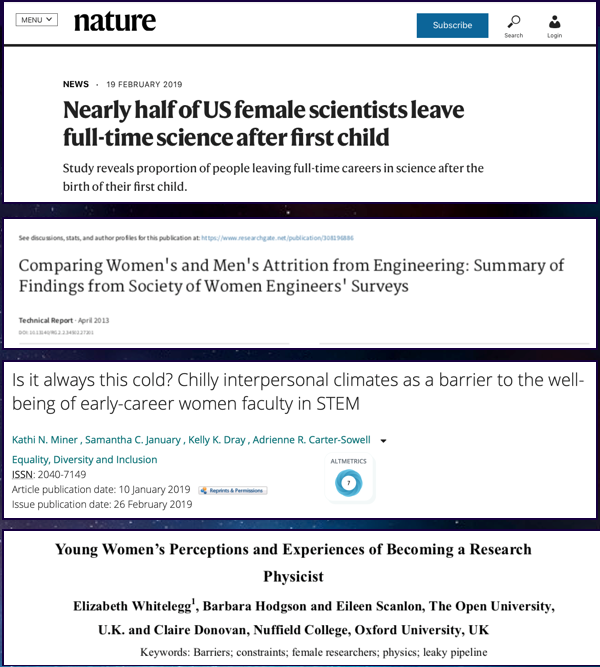
How to improve culture:
- Values-based culture
- Codes of conduct (enforced)
- Diversity training
- LGBTQI+ training and support
- Cultural awareness training
- Indigenous awareness training
- Family-friendly policies
- Inclusive events (conferences, meetings etc)
- Inclusive social events
- Sharing our hobbies and work/life balance

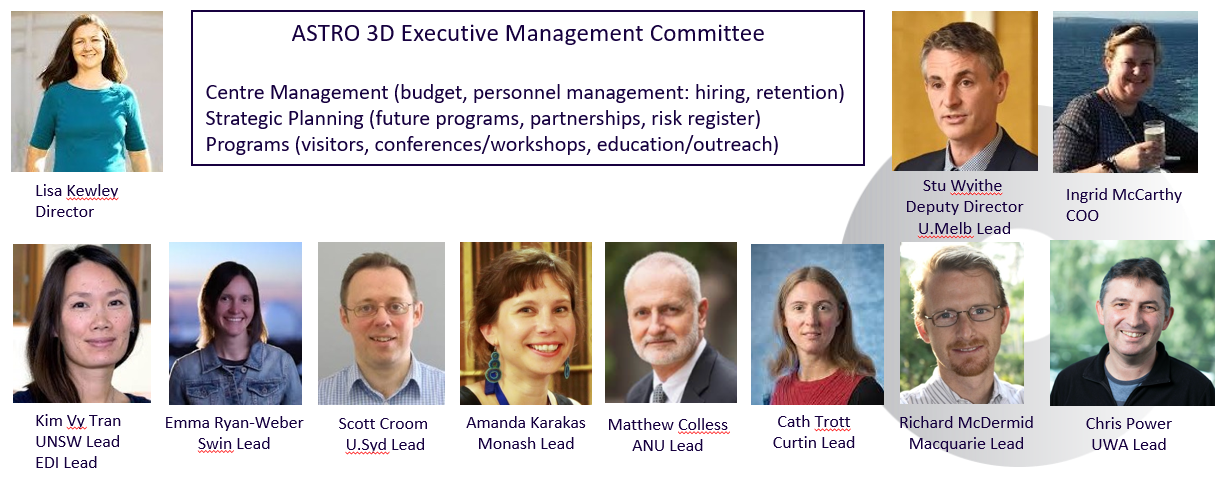
LEADERSHIP
Representation Matters
- Multiple role models in senior leadership positions
- Multiple supervisors and mentors
- Mentoring circles
MORE WOMEN LEADERS = MORE WOMEN IN TEAMS
% women in ASTRO 3D Projects
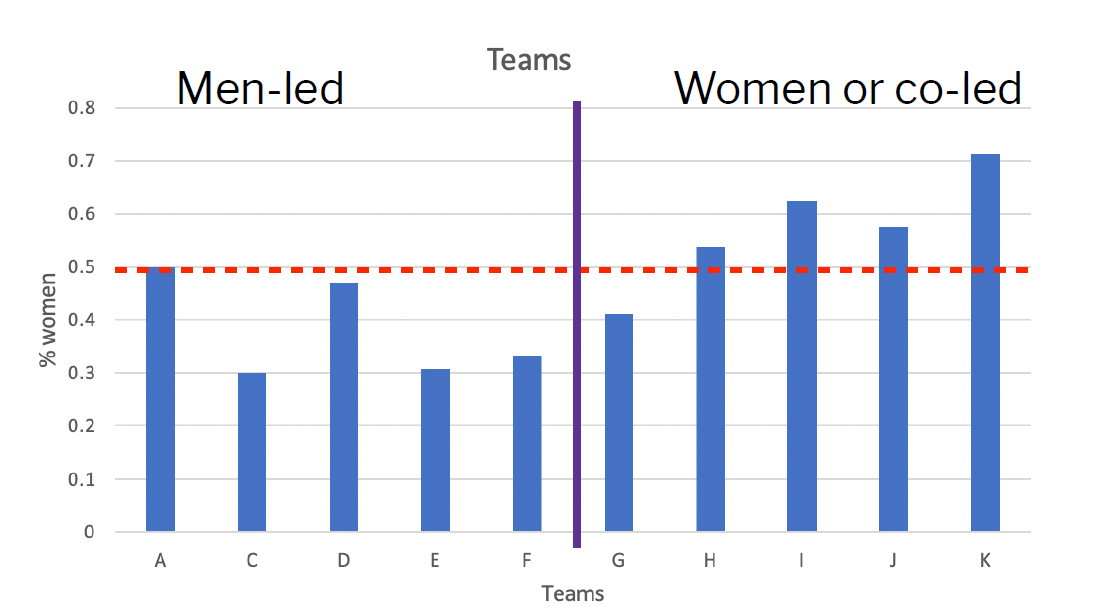
% women over time
